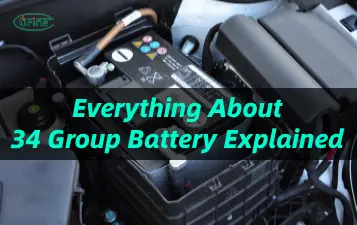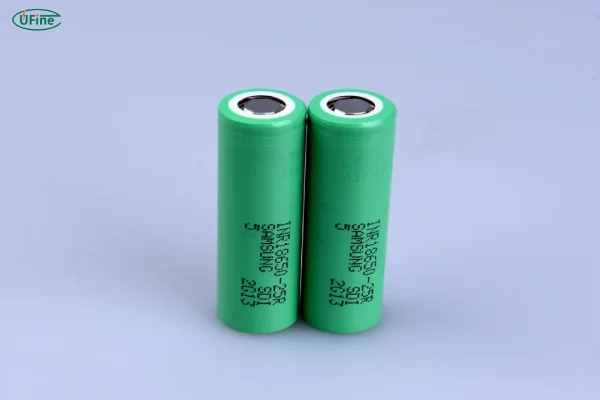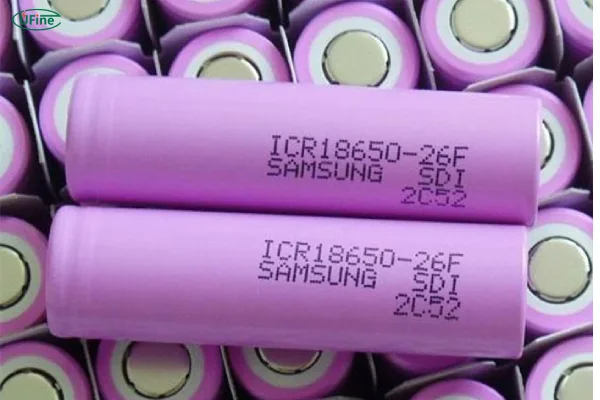
- Part 1. Learn Samsung 18650 battery
- Part 2. Understanding the 18650 cell format
- Part 3. Popular Samsung 18650 battery models
- Part 4. Performance characteristics
- Part 5. Samsung 18650 batteries vs. other brands
- Part 6. Applications of Samsung 18650 batteries
- Part 7. Battery pack design and configuration
- Part 8. Safety and handling guidelines
- Part 9. Charging Samsung 18650 batteries
- Part 10. Recycling and environmental impact
- Part 11. How to spot fake Samsung 18650 batteries
- Part 12. Buying guide: where and how to purchase
- Part 13. FAQs
- Part 14. Final words
Samsung 18650 batteries are among the most reliable and widely used lithium-ion cells in the world. Known for their consistent performance, safety, and compatibility, these cylindrical batteries are used in everything from electric vehicles and e-bikes to power tools and solar storage systems. In this comprehensive guide, we explore the characteristics, types, usage scenarios, and performance metrics of Samsung 18650 batteries. Whether you’re a hobbyist, OEM, or tech professional, understanding these batteries can help you make informed choices in design, purchasing, or integration.
Part 1. Learn Samsung 18650 battery
The term “18650” refers to the battery’s size: 18mm in diameter and 65mm in length. These cells use lithium-ion chemistry, offering a high energy density, long cycle life, and stable discharge profiles. Samsung, a leading global electronics brand, produces a variety of 18650 models under the INR (LiNiMnCoO2-based) chemistry umbrella. Their batteries are favored for their safety features, power output, and reliability across diverse applications.
Part 2. Understanding the 18650 cell format
18650 batteries have become an industry standard due to their size, versatility, and energy efficiency. They typically offer capacities ranging from 2000mAh to over 3500mAh, with nominal voltages of 3.6V to 3.7V. Key distinctions include:
- Protected vs. Unprotected Cells: Protected 18650s have a built-in protection circuit to prevent overcharge, over-discharge, and short circuits. Unprotected ones are typically used in battery packs with external Battery Management Systems (BMS).
- Flat Top vs. Button Top: Button tops are commonly used in consumer electronics, while flat tops are preferred for battery pack assembly.
Choosing Between Unprotected and Protected Batteries
Part 3. Popular Samsung 18650 battery models
Samsung offers a variety of 18650 models tailored for different performance needs:
| Model | Capacity | Max Discharge | Chemistry | Use Case |
|---|---|---|---|---|
| INR18650-25R | 2500mAh | 20A | INR | Power tools, e-bikes |
| INR18650-30Q | 3000mAh | 15A | INR | Vapes, flashlights, drones |
| INR18650-35E | 3500mAh | 8A | INR | Solar systems, portable power |
Each model balances energy density and discharge rate to suit different power and longevity needs.
Part 4. Performance characteristics
Samsung 18650 batteries are engineered to deliver consistent, high-performance output. Key performance indicators include:
- Energy Density: High capacity within a compact form factor.
- Discharge Rate: Models like the 25R can handle up to 20A continuous discharge.
- Cycle Life: With proper use, Samsung cells can exceed 500–800 cycles.
- Thermal Stability: Enhanced safety features reduce risks of overheating or thermal runaway.
Their performance remains stable across a wide range of environmental conditions, making them suitable for both indoor and outdoor applications.
Part 5. Samsung 18650 batteries vs. other brands
When comparing Samsung with competitors like Panasonic, LG, and Sony, Samsung holds its own in terms of quality, cost-effectiveness, and availability:
- Build Quality: Samsung employs strict quality control and testing protocols.
- Price vs. Performance: More affordable than some premium brands while maintaining high reliability.
- Global Availability: Samsung batteries are available through numerous distributors and online retailers.
While Panasonic often leads in EV battery technology, and LG in ultra-high capacity cells, Samsung strikes a strong balance ideal for mid-to-high power applications.
Part 6. Applications of Samsung 18650 batteries
Samsung 18650 batteries power a diverse range of products:
- Electric Vehicles (EVs): Used in battery packs for scooters and electric bikes.
- Power Tools: Their high discharge rates make them ideal for cordless drills and saws.
- Flashlights and Headlamps: Lightweight and long-lasting power.
- Solar Energy Storage: Integrated into modular systems.
- DIY Battery Projects: Makers and engineers prefer them for building power banks, drones, and robots.
Manufacturers like Ufine Battery, a leading Chinese custom lithium battery supplier, frequently incorporate Samsung 18650 cells into custom pack solutions. Ufine Battery can customize batteries in various voltages, sizes, and capacities to fit clients’ unique application needs.
Part 7. Battery pack design and configuration
Samsung 18650 batteries are widely used in pack assemblies. Common configurations include:
- Series (S): Increases voltage (e.g., 3S = 11.1V)
- Parallel (P): Increases capacity (e.g., 2P = 5000mAh if using 2500mAh cells)
Battery packs often combine series and parallel (e.g., 4S3P) to achieve desired output. Engineers typically integrate BMS to manage charging, temperature, and balance across cells.
Ufine Battery specializes in designing such custom battery packs using Samsung 18650 cells or other cylindrical formats, depending on customer requirements.
Part 8. Safety and handling guidelines
Safety is paramount when working with lithium-ion batteries. Follow these guidelines for Samsung 18650s:
- Use only certified chargers.
- Avoid puncturing or deforming the battery.
- Store in a cool, dry environment (15–25°C ideal).
- Never mix old and new batteries.
- Monitor for signs of swelling or overheating.
Samsung includes built-in safety features, but external protection circuits or BMS are recommended in larger packs.
Part 9. Charging Samsung 18650 batteries
Charging must be done using the CC/CV (Constant Current/Constant Voltage) method:
- Charge Voltage: 4.2V per cell (max)
- Charge Current: 0.5C to 1C (C = battery capacity)
- Termination Current: Typically 0.05C
Smart chargers like Nitecore or XTAR are compatible. Overcharging or charging with an incompatible charger can significantly shorten lifespan or cause safety risks.
Companies like Ufine Battery also offer integrated charging solutions with custom battery packs, ensuring safe and efficient charging tailored to the pack design.
Part 10. Recycling and environmental impact
Lithium-ion batteries should not be disposed of in regular waste. Recycling conserves resources and reduces environmental impact. Samsung supports global recycling initiatives and partners with local recycling facilities.
Consumers can drop off used 18650 batteries at electronic recycling centers. Some local municipalities and retailers offer recycling programs. Businesses sourcing large quantities from suppliers like Ufine Battery can often arrange take-back or recycling support.
Part 11. How to spot fake Samsung 18650 batteries
The popularity of Samsung 18650 cells has made them a target for counterfeiting. Fake batteries pose serious safety risks. Tips to avoid them:
- Buy from Authorized Dealers: Avoid unknown marketplaces.
- Check Labeling and QR Codes: Genuine Samsung cells have consistent printing and QR verification.
- Compare Weight and Dimensions: Counterfeits often weigh less.
- Test Performance: Lower-than-expected capacity or discharge current is a red flag.
Working with a trusted battery assembler like Ufine Battery ensures you receive genuine Samsung cells, properly sourced and integrated into quality-assured packs.
Part 12. Buying guide: where and how to purchase
If you’re looking to buy Samsung 18650 batteries, consider these tips:
- Check Technical Specs: Know the capacity, discharge rate, and voltage needed.
- Choose a Trusted Supplier: Ufine Battery, for example, not only offers genuine cells but can help you design and assemble custom solutions based on your application.
- Watch for Manufacturing Date: Avoid outdated stock; lithium cells degrade over time.
- Consider Application Requirements: High-drain applications may require 25R, while high-capacity applications may benefit from 35E.
Part 13. FAQs
Can I use Samsung 18650 in my vape or power tool?
Yes, but make sure the discharge rating matches the current draw. For vapes, 25R or 30Q is recommended.
What’s the difference between 30Q and 25R?
The 30Q offers higher capacity (3000mAh) but a lower max continuous discharge rate (15A) compared to the 25R (2500mAh, 20A).
How long do Samsung 18650 batteries last?
With proper usage, 500–800 charge cycles are typical. High-drain usage and poor charging can shorten life.
Can Ufine Battery customize 18650 packs with Samsung cells?
Absolutely. Ufine Battery specializes in building custom lithium battery solutions using authentic Samsung 18650 cells, tailored to voltage, capacity, and size requirements.
Part 14. Final words
Samsung 18650 batteries are a cornerstone of modern lithium-ion energy storage solutions. Known for their safety, performance, and reliability, they serve countless industries and applications. By understanding their specifications, usage, and sourcing options, users can maximize their investment in battery-powered solutions.
Related Tags:
More Articles

Best Group 34 Battery Guide: AGM, Lithium & Lead-Acid Options
Discover Group 34 battery dimensions, capacity, CCA ratings, and the best AGM or lithium options. Learn which Group Size 34 battery fits your car.
Understanding 5V Batteries: From Basics to Choosing the Right Charger
Discover everything about 5V batteries, from types and capacities to applications and charging options. Learn how to make the best choice for your power needs.
Discover how many amps a 9V battery can supply, its actual current output, discharge rate, and capacity for alkaline, lithium, and rechargeable 9V batteries.
How Long Can a 3.7V Lithium-Ion Cell Last?
Discover how long a 3.7V lithium ion cell lasts! Learn factors impacting battery life, plus tips to extend its use. Get the most from your devices now.
Is an 8 Volt Golf Cart Battery Right for You? Golf Cart Battery Comparison
Not sure if an 8 volt golf cart battery is right for you? This guide explains the benefits, costs, types, and top brands to help you choose the best battery.




